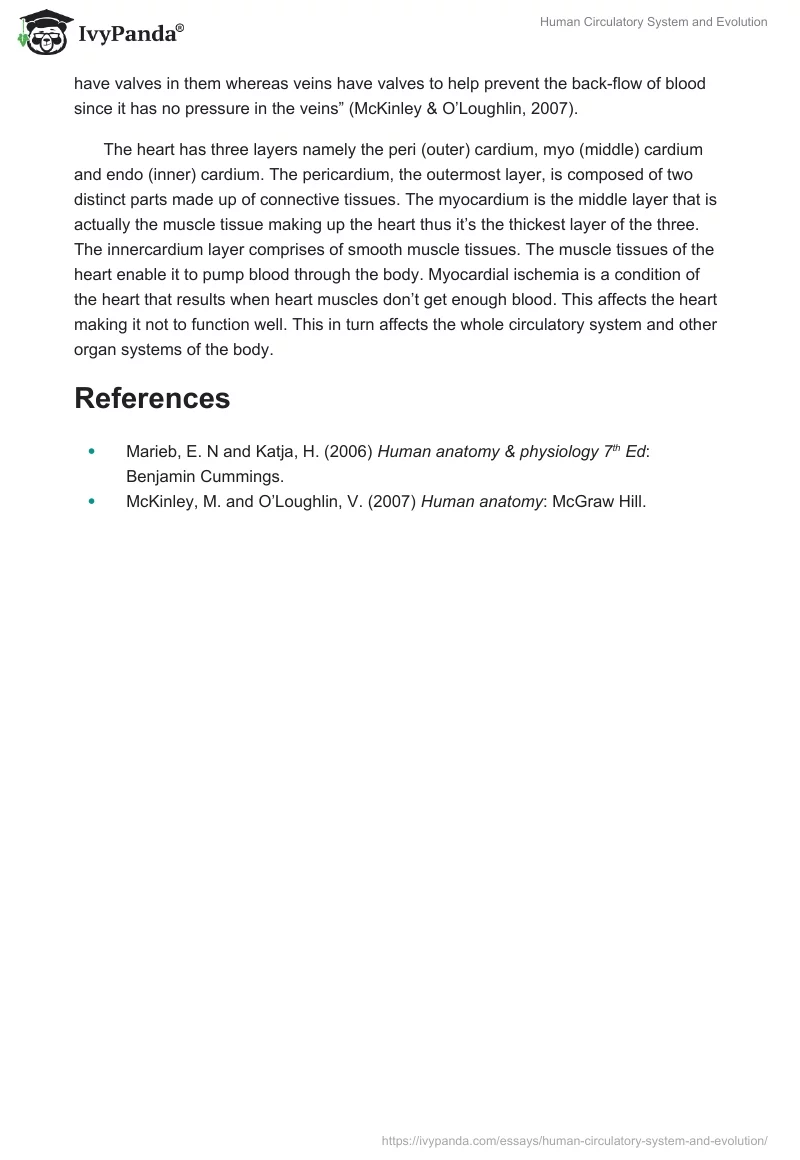The human circulatory system is a system that transports gases, nutrients and wastes to and from body cells. It assists in combating sicknesses and contributes to the stabilization of ph and temperature of the body thus facilitating maintenance of homeostasis. This system works in collaboration with the digestive system in order to distribute nutrients to the various body parts and with the respiratory system to provide oxygen to body parts and carry away carbon dioxide gas.
The circulatory system comprises three main distinctive divisions namely systemic, pulmonary and coronary circulations. The pulmonary circulation takes place in the lungs. The coronary circulation supplies blood to the heart while the systemic circulation supplies blood to the rest of the body. During the pulmonary circulation, blood flows through the lungs where it is oxygenated, a process of adding oxygen to blood. The coronary circulation involves the movement of blood through the tissues of the heart while the systemic circulation involves taking blood to all the rest of the body tissues and back to the heart” (Marieb & Katja, 2006).
The major components of this system are the heart, the human pump, a fluid called blood, and vessels for transporting the blood. The heart’s main purpose is to pump blood through-out the body. The heart, which is approximately the size equal to a clenched fist, has four chambers with the top ones called atriums and the bottom ones ventricles. Serum enters the cardiac organ through vena cava which is the gigantic vein; this vein is usually divided into two. Serum then enters the atrium of the left side of the heart and then drains into the right ventricle. The right ventricle then forces blood through the pulmonary artery to the lungs to be oxygenated. Blood then gets into the pulmonary vein vessel after leaving the left ventricle. The ventricle on the left propels blood to the entire body through the aorta. Blood usually is made up of white blood cells, plasma, red blood cells and platelets. Blood vessels in the human body are either veins or arteries. Veins usually transport blood without oxygen back to the heart from the other parts of the body. Arteries transport oxygenated blood from the heart to the rest of the body The arteries carry blood which has a lot of pressure hence they don’t have valves in them whereas veins have valves to help prevent the back-flow of blood since it has no pressure in the veins” (McKinley & O’Loughlin, 2007).
The heart has three layers namely the peri (outer) cardium, myo (middle) cardium and endo (inner) cardium. The pericardium, the outermost layer, is composed of two distinct parts made up of connective tissues. The myocardium is the middle layer that is actually the muscle tissue making up the heart thus it’s the thickest layer of the three. The innercardium layer comprises of smooth muscle tissues. The muscle tissues of the heart enable it to pump blood through the body. Myocardial ischemia is a condition of the heart that results when heart muscles don’t get enough blood. This affects the heart making it not to function well. This in turn affects the whole circulatory system and other organ systems of the body.
References
- Marieb, E. N and Katja, H. (2006) Human anatomy & physiology 7th Ed: Benjamin Cummings.
- McKinley, M. and O’Loughlin, V. (2007) Human anatomy: McGraw Hill.


